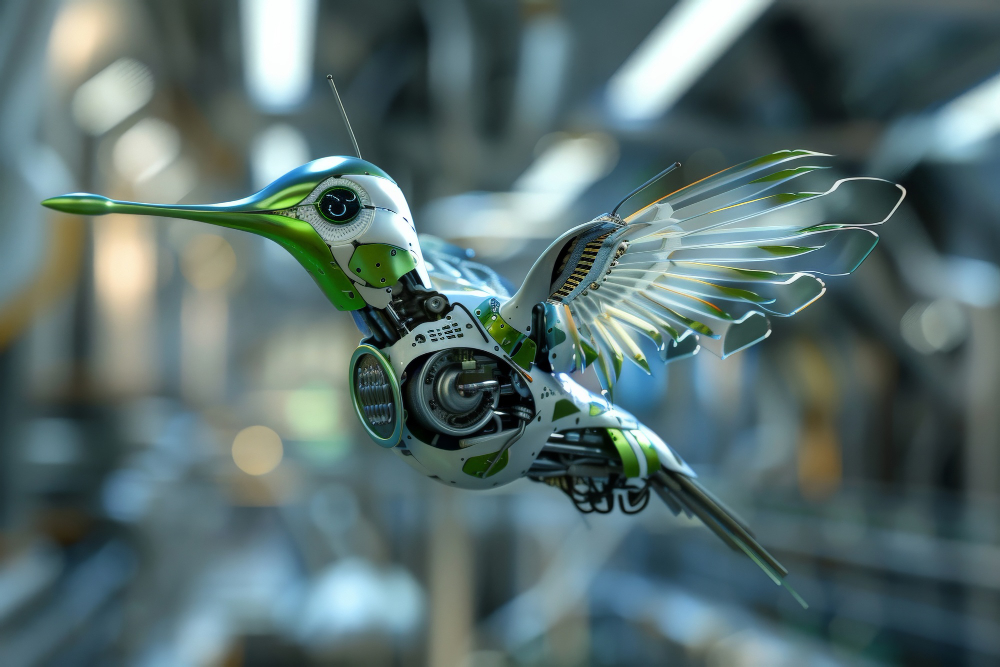What’s the role of AI and Technology in driving Sustainability?
AI and technology play a very vital role in the sustainability movement. This is because sustainability has become a critical goal for businesses and societies. Artificial intelligence (AI), the Internet of Things (IoT), and data analytics are transforming how we approach sustainability. These technologies help industries reduce waste, track emissions, and use resources more efficiently.
This article will give you highlights of what AI and technology can do in order to pave the way for a greener future.
Let’s get into the role of AI and Technology in driving sustainability.
How AI is Revolutionizing Sustainability
AI is a game-changer for industries working towards sustainability. It processes vast amounts of data quickly, offering actionable insights.
Here are some key ways AI is driving change:
1. Predictive Maintenance in Manufacturing
AI helps companies predict when machines will fail. This reduces downtime and prevents unnecessary repairs. By fixing issues before they escalate, businesses save resources and reduce waste. For example, factories can cut down on material wastage by optimizing machine performance.
2. Smart Energy Management
AI enables real-time energy monitoring. It helps businesses optimize energy use by analyzing patterns and suggesting improvements. For instance, AI-powered systems can adjust heating, cooling, and lighting based on occupancy. This not only lowers energy bills but also reduces carbon footprints.
3. Precision Agriculture
Agriculture is a major contributor to greenhouse gas emissions. AI-powered tools help farmers make smarter decisions. They analyze soil health, predict weather changes, and optimize irrigation. As a result, farmers use fewer pesticides and fertilizers, preserving the environment.
The Internet of Things (IoT) and Its Impact on Sustainability
The IoT connects everyday devices to the internet, allowing them to share data. This technology is crucial for building sustainable systems. Here’s how IoT is making a difference:
1. Waste Management
Smart bins equipped with IoT sensors monitor waste levels. They alert waste collection teams when bins are full, optimizing collection routes. This reduces fuel consumption and minimizes overflowing garbage.
2. Water Conservation
IoT sensors track water usage in real time. They identify leaks or overuse, helping households and industries conserve water. For example, smart irrigation systems use sensors to water crops only when needed, saving millions of liters of water annually.
3. Sustainable Transportation
IoT plays a vital role in smart transportation systems. Connected vehicles and traffic management tools reduce congestion and fuel consumption. Electric vehicle (EV) charging networks also rely on IoT to optimize energy use.
The Role of Data Analytics in Sustainability
Data analytics turns raw data into meaningful insights. It’s a powerful tool for driving sustainability initiatives. Here’s how data analytics is helping industries go green:
1. Carbon Emission Tracking
Industries can track their carbon emissions using advanced data analytics. These tools help businesses identify high-emission activities and find ways to reduce them. Accurate tracking also ensures compliance with environmental regulations.
2. Supply Chain Optimization
Data analytics helps companies streamline their supply chains. By analyzing logistics, businesses can reduce transportation costs and emissions. For instance, delivery routes can be optimized to use less fuel.
3. Consumer Behavior Analysis
Understanding consumer behavior is crucial for promoting sustainable practices. Data analytics helps businesses identify trends and encourage eco-friendly choices. For example, companies can promote products with lower environmental impacts based on customer preferences.
Real-World Examples of AI and Technology in Sustainability
Several companies are already leveraging AI, IoT, and data analytics to achieve sustainability goals. Here are some inspiring examples:
1. Google’s Data Centers
Google uses AI to optimize energy use in its data centers. AI systems monitor cooling and electricity usage, reducing energy consumption by up to 30%.
2. Tesla’s Electric Vehicles
Tesla integrates AI and IoT in its electric vehicles. These technologies optimize battery performance and improve energy efficiency.
3. IBM’s Green Horizons
IBM’s Green Horizons project uses AI and data analytics to predict air pollution levels. This helps cities take preventive measures and improve air quality.
Challenges in Implementing AI and Technology for Sustainability
While AI and technology offer immense potential, there are challenges to overcome:
1. High Initial Costs
Implementing advanced technologies requires significant investment. Small businesses may struggle to adopt these solutions.
2. Data Privacy Concerns
Collecting and analyzing data raises privacy issues. Companies must ensure data security to gain consumer trust.
3. Skill Gaps
The workforce needs to upskill to manage and operate new technologies. This requires investment in training and education.
The Future of AI and Technology in Sustainability
The future looks promising as AI and technology continue to evolve. Governments and businesses are investing in sustainable tech solutions. Here are some trends to watch:
1. Smart Cities
IoT and AI will power smart cities with efficient energy, water, and waste management systems. This will reduce urban environmental impacts.
2. Circular Economy
Technology will drive the transition to a circular economy. AI and data analytics will help industries recycle and reuse materials more effectively.
3. Renewable Energy Integration
AI will play a key role in integrating renewable energy sources like wind and solar into power grids. This will make energy systems more sustainable.
Conclusion
AI, IoT, and data analytics are transforming sustainability efforts. These technologies help industries reduce waste, track emissions, and optimize resources. While challenges remain, the potential benefits are enormous. With these innovations, we can build a greener, more sustainable future for generations to come. The time to act is now.
Let’s harness technology to save our planet.

